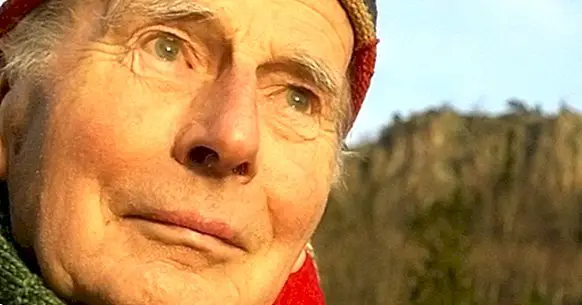The environmental theory of Arne Naess: we are the environment that we inhabit
Until well into the twentieth century, both psychology and the other disciplines responsible for studying different aspects of human existence understood that, as people, we are disconnected from the environment in which we live ; that is, we are individuals, in the most literal sense of the term. This idea may seem very bizarre in this way, but in fact it continues to make itself felt in our way of thinking.
For example, when we say that each person works his destiny, or that the life of each one depends mainly on how he manages his willpower, we are treating human life as if it were something disconnected from the context.
This idea was also predominant in Western philosophy and, therefore, led us to assume a lifestyle based on the use of nature as if it were a simple collection of resources. But this ended, among other things, thanks to the work of philosophers of the environment among which stressed the Norwegian thinker Arne Naess . Then we will see how he thought and how he conceived our way of life.
- Related article: "How are Psychology and Philosophy alike?"
Who was Arne Naess?
This philosopher was born in Oslo in 1912, and in 1933 he became the youngest professor at the University of Oslo ; He dedicated himself to teaching philosophy classes.
As a young man, Naess showed interest in the environment and the protection of nature, even at a time when environmentalism was practically non-existent. However, he began to put his ideas into practice after retiring.
In the year 1970, he chained himself to an area near a waterfall located in a fjord where they planned to build a dam and demanded that the project be stopped, and also helped boost many other actions of environmentalists based on direct action .
This type of experience made Arne Naess form a philosophy about the relationship between human beings and nature.
- Related article: "People who live in contact with nature have better mental health"
The environmental theory of Arne Naess
The philosophy of Naess It is usually summarized with the slogan "think like a mountain" , that this ecologist used occasionally, although it was used for the first time by another activist, Aldo Leopold. This phrase, reminiscent of Buddhist proverbs, does not really express a complicated idea to understand: this Norwegian thinker believed that treating human beings as their being something separate from the rest of nature responds to an illusion, a mirage.
The cause of this collective delirium it has to do with anthropocentrism , the belief that everything material exists to respond to the needs of the human being, as if it were part of the garden of a hotel. As historically our species has had some success at the time of adapting the environment to their interests, we have believed that this will always be the case, and that this is the reason for the environment: to provide us with resources that we can consume.
Another derivation of the idea that we should think like a mountain is that among our main interests should be the protection of the environment; in this way, we reduce the chances of natural catastrophes and, with this, we improve our prospects of enjoying quality of life in a remarkable way.
- Maybe you're interested: "Antinatalism: the current against the birth of more human beings"
The expanded consciousness
Both Arne Naess and Aldo Leopold believed that, because of the ability to think in abstract terms, we should take responsibility for the environment. Unlike animals with reduced cognitive abilities, we can think about the long-term consequences of things and, therefore, it is an ethical necessity to do everything possible to reduce our negative impact on the environment.
So, in harmony with nature is the key to living together in a correct way and in which most of the inhabitants of the planet benefit from the fact that evolution has created a species capable of thinking about everything. Instead of focusing our concerns on banal aspects of everyday life, we should look back and protect the place we come from: the biosphere.
The the "deep self"
Arne Naess proposed the concept of the "ecological self" to refer to this self-image in which the concept we have of ourselves is linked to the natural environment to which it belongs and to the community of living beings that cohabit in these. The defense of this form of self-recognition can lead us to see ourselves not as individuals, but as part of a network of living beings and forms of expression of nature : eagles, fish, wolves, etc.
Of course, it seems that this way of thinking was influenced by the philosophies of Amerindian and animist peoples, although Naess did not put much emphasis on the spiritual dimension that this perspective hurts. In any case, it is clear that it is a way of thinking that would currently be accepted by many people.



















